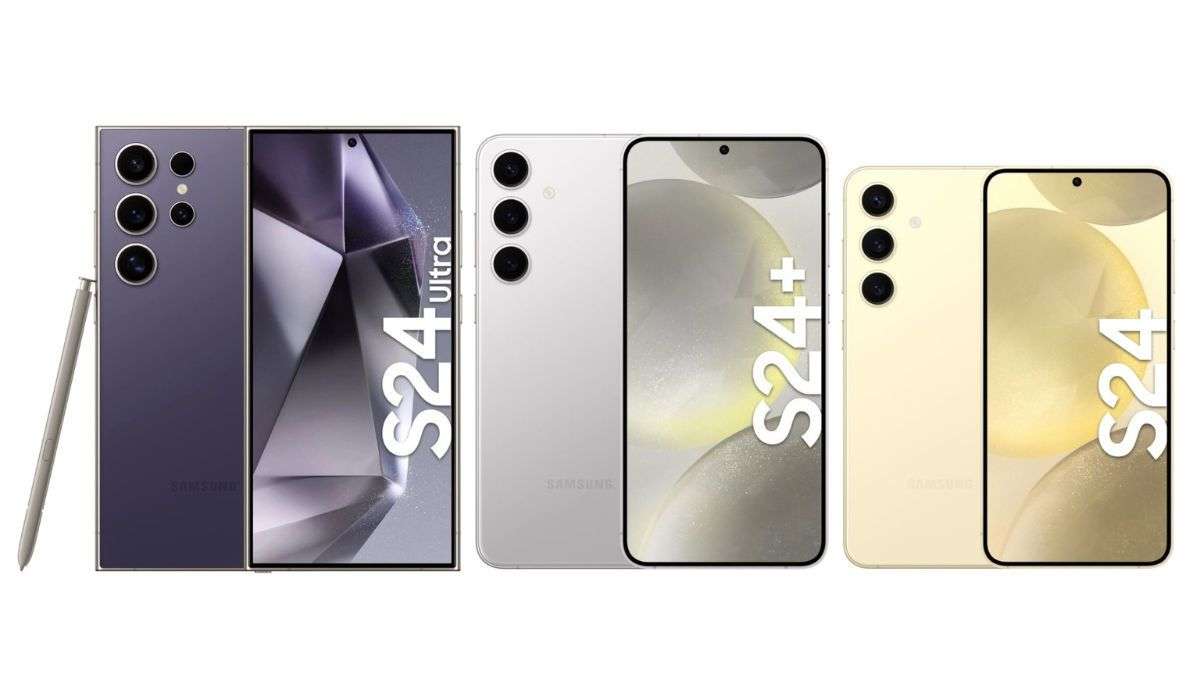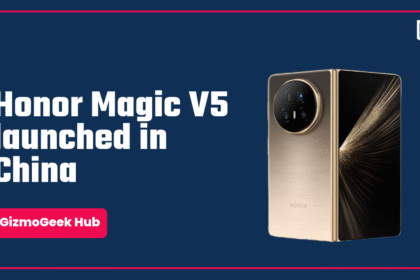The first Galaxy Unpacked event for 2024 wrapped up on 17th January, and there were quite a few exciting announcements. The event shows off Samsung’s Galaxy AI, which you can first get with the new Samsung S24 series lineup of phones, and One UI 6.1. There’s also a new Galaxy Ring, which is a fitness and health tracker.


The S24 lineup doesn’t feature major hardware upgrades, but it focuses on Galaxy AI, which is apparently free until 2025. After that, Samsung might charge a monthly or annual subscription fee for it. As a result of declining hardware sales, companies have to make money from older phones, and this is one way to monetize existing users. In case Samsung makes Galaxy AI a paid subscription, we don’t yet know the prices.
Galaxy S24 and S24 Plus
The S24 and S24 Plus feature subtle differences, the main ones are size and battery capacity. The S24 Plus also has a 1440P display resolution and 45W fast charging. The base S24 is stuck with the relatively slower 25W, and it starts at 128GB storage with 8GB RAM, while the Plus starts at 12GB RAM and 256GB of storage.
Both phones share the same camera hardware. They have a triple camera with a 1/1.56″ 50MP GN3 main sensor, a 1/2.55″ 12MP ultrawide (no autofocus), and a 10MP 1/3.94″ 3X telephoto sensor (with OIS). They also share the same ISOCELL 3LU 12MP selfie sensor. The design is slightly different, with more squared-off edges and there’s a dramatic reduction in the size of the bezels.
There’s also a bump to battery capacities. Since the 8 Gen 3 is more efficient, this should positively contribute to better battery life. Initial tests show mostly positive results, which is also thanks to more efficient display panels. The displays use a new M13 material, which doesn’t take up as much power, and they also use LTPO- so they can scale down the refresh rate to 1Hz when the screen is static. The S24 has a 4000mAh battery, up from 3900 on the S23. The S24+ has a 4900mAh battery, up from the 4700 on the S23+.
The maximum brightness under sunlight is now 2600 Nits (peak), and we have to wait for numbers of HBM and manual brightness with the toggle. Since brightness perception is logarithmic, these numbers don’t hold much value, and flagship screens have been comfortable enough to view under direct sunlight for a while now. These phones ship with One UI 6.1 out of the box, and they’ll get 7 years of major Android updates. This is currently on par with Google’s promise of 7 updates on the Pixel 8 lineup.
As evident, there are no major upgrades to the hardware of the phone. The screen is better, and there’s a chip swap- but there’s nothing new in the camera hardware. This is disappointing, considering that competitors like OnePlus, Xiaomi, and Vivo offer much larger main and telephoto sensors in the same price range. If there are any major upgrades, it’s all software-based AI features. We’ve explored all the Galaxy AI features in detail below, after the description of the S24 Ultra.
Exynos 2400
The Exynos 2400 is the most confusing bit of the launch. Samsung didn’t use it on the Ultra model, which either means there’s a contract with Qualcomm or they’re not confident about it. Samsung barely mentioned the Exynos 2400 at the launch event. If you take a look at Samsung’s website in regions where the S24 and S24+ ship with the Exynos 2400, you’ll find that they only mention the clock speeds, GPU, and CPU cluster. They don’t specifically name the chip.
To complicate matters further, some tests show awful scores on benchmarks like Antutu; scoring just 1.3 Million or 1.6 Million points, which is a generation or two behind. They also show alarming temperature gains, and some tests show that the CPU throttling graph is not stable when engaged even for ten minutes.
However, other tests show that the Exynos 2400 is better than the 8 Gen 2 and is on par with the 8 Gen 3 in terms of Geekbench scores and 3D Mark Wildlife Extreme stress tests. It’s also better than Apple’s A17 Pro in some ways. The Exynos 2400 maintains decent gaming performance in games like Genshin Impact, but developers have not optimized it yet to run at high resolutions.
In case the Exynos 2400 performs worse overall, then some regions are getting an inferior product at the same price. We’re not sure whether the Exynos 2400 is an issue for casual users. Initial tests show positive reception to efficiency, which means the battery life is as good as the 8 Gen 3. The Exynos 2400 also has 4 efficiency cores, which is two more than Qualcomm’s offering. If the Exynos 2400 is less efficient and also heats up more while performing worse, the chipset is terrible for flagship prices. However, nothing is conclusive due to severe disparities between reviewers.


Sasmsung Galaxy S24 Ultra
The Galaxy S24 Ultra has the largest screen size of the lot, and this time drops the curved panel in favor of a flat one with even bezels. The S24 Ultra has the best camera hardware, with a 1/1.3″ 200MP main sensor, a 1/2.55″ ultrawide with autofocus, so it can also do macro photos, a 1/3.52″ 10MP 3X telephoto camera, and also a 5X 50MP 1/2.52″ periscope camera. The only change here is to the last zoom sensor. It’s down from a 1/3.52″ 10MP 10X periscope down to a 5X periscope.
This helps in shorter zoom ranges and also enables 5X portraits. However, it performs comparatively worse at longer zoom ranges. The intermediate 5 to 10X zoom range now looks better, though shots at and beyond 10X will now lack clarity. It’s definitely a tradeoff, and we can’t exactly call this an upgrade or a downgrade since use cases differ. It has the same 12MP front camera as the S24 and S24+.
The S24 Ultra is the only model that’s shipping with the Snapdragon 8 Gen 3 chip worldwide, while the S24 and S24 Plus will use the Exynos 2400 in a couple of regions. Display-wise, it’s a 1440P 120Hz LTPO panel that also has 2600 Nits of peak brightness and a new anti-reflective coating which makes the screen almost matte-like since it’s really good at avoiding reflections. The S24 Ultra gets 7 years of updates, too.
Again, the hardware is not particularly impressive against dual periscopes or pericope macros, 1″ sensors, and continuous optical zoom. It’s clear that Samsung is heavily focusing on software and Galaxy AI, and it’s to the point where camera hardware upgrades this year are mostly sidelined. It’s a different approach, and we have to wait for tests to conclude whether it was the right approach.
Galaxy AI
Galaxy AI includes a host of new features, some of them are via the cloud, and some are on-device. This is the major highlight of the event. One UI has joined Pixel’s skin of Android in terms of cutting-edge AI features. We can now also call the S24 lineup as part of the smartest smartphones in the world. Here’s a rundown of the new AI features:
Call Assist: You can use it to translate your voice to text in real time. According to initial reviews, it’s buggy, but it will hopefully get better over time.
Press down to slow down videos: This feature interpolates frames or motion. It also slows down existing videos just with a simple press down.
Live Translate: This feature helps break language communication barriers. It works in real-time for both calls and texts.
Al Wallpaper generator: With a few prompts, you can design your own wallpaper style. This feature was already on Pixels before, but Samsung’s implementation is fun as well.
Keyboard: Galaxy AI now uses a feature similar to the popular Grammarly app. It can detect writing style, and you can change it to your preferences. It also corrects grammar, and it works with every app.
Summarize: If you’ve written down random notes in a hurry that make no sense, the summarize feature can give you a concise rundown. It doesn’t just work in the notes app, you can use it to summarize anything from webpages or PDFs, even.
Photo editing: Google has the Magic Editor, Samsung takes it a step further, and tests show that it does it faster. It has better autofill, and it can rearrange the subject’s location as well. There are also AI features for better details when zooming in or cropping into images taken with the S24.
Instant Google Search: You can search for specific objects in an image. You can also press home or use the gesture bar to activate it.
Circle to Search: This is more of a Google feature, so it’ll make it to a lot of phones eventually. You can just circle a random area and that’ll instantly search the text in it.
Conclusion
The S24 lineup is not much of a hardware evolution, but Samsung is trying to give us a new smartphone experience with Galaxy AI. We need further tests to know how the Exynos 2400 performs and whether Samsung got it right this time.









